Case Study: Wallpaper in Just About Every Room
Wallpaper lovers, rejoice! Your beloved paper wall coverings have reentered mainstream decor with a vengeance. Wall coverings are nearly as versatile as paint today, and your favorite designs can now be found on accent walls in supersleek lofts or wall to wall in formal dining rooms. This diversity — as well as near-endless new patterns, reasonable prices and easier-than-ever applications — is what's making wallpaper popular again.
Kricken Yaker, interior designer and owner of Vanillawood, often opts for the texture of paper instead of flat paint. Her love for wallpaper shows in her design for the Portland, Oregon, house below; almost every room incorporates a different pattern.
Piecing together your own multicolored, multipatterned house can be tricky, especially if you have open-concept spaces — but it's possible with carefully selected designs, correct placement and proper application. If you're ready to play with more wallpaper prints throughout your house, borrow some of Yaker's expert tips on how to make them work.
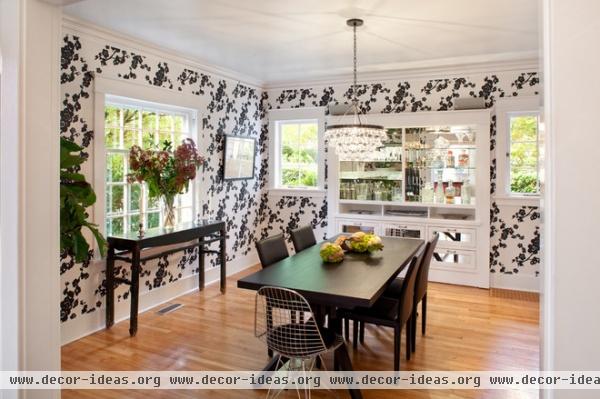
Determine where wallpaper works — and where it doesn't. When it comes to wallpaper, not all spaces are created equal; some rooms are trickier than others. Defined, closed-off rooms, like this dining room, are ideal, since a different color or print here won't conflict with what's in other (out-of-view) rooms.
Open-concept spaces are a different story, since you want to avoid choppy lines that break up the space. In those cases choose a wallpaper that's neutral and not too overwhelming, Yaker says. That way it will go well with the other areas it shares space with.
When it doubt, carry the wallpaper throughout, use it just on an accent wall or go without.
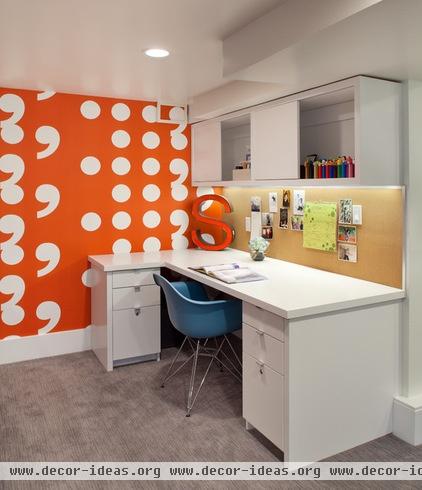
Pick your accent walls. Wall-to-wall color isn't an option everywhere, so consider accent walls here and there to lighten the load. "If you are only choosing one wall, make sure it's one that can be seen from other rooms, like the wall opposite the door of a bedroom or dining room," Yaker says. "That way it's a great visual punch and can be enjoyed every time someone walks by."
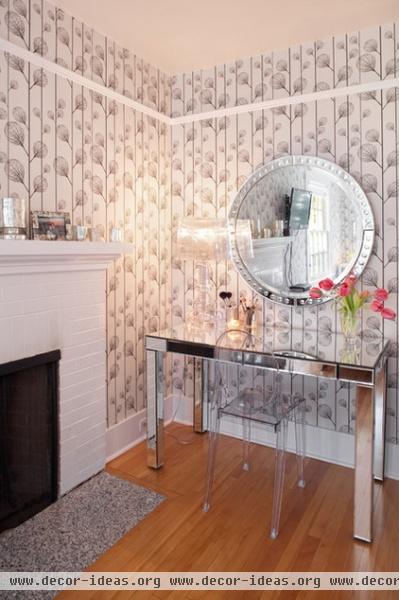
Don't forget to layer. Use your pattern as a foundation for furniture and decor that reinforce your style, like this trendy mirrored desk and transparent chair.
When decorating walls, dramatic prints should be left alone, but feel free to ramp up more muted wallpaper tones with art or mirrors, Yaker says.
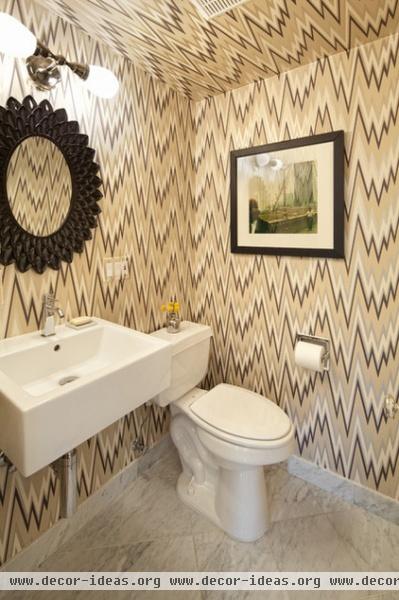
Select your "wow" walls. Some rooms support prints better than others, so think about where you want to make your boldest statement. "A powder room is a great place to play with patterns," Yaker says. "Since it's a room where the door is often left wide open, it gives guests something fun to look at. It's a small space that usually doesn't have a lot going on, so it adds excitement."
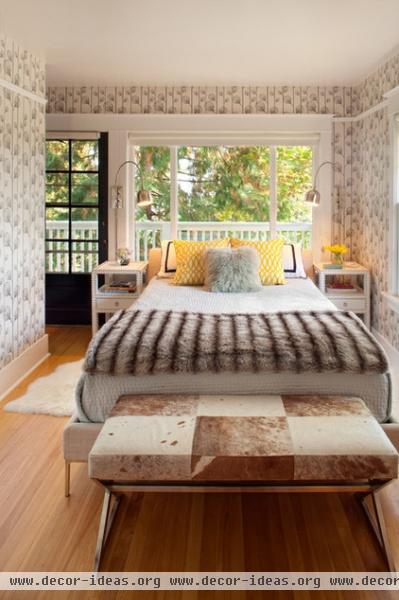
And sometimes go subtle. Your bedroom is the spot for sleep and relaxation, so it isn't the place for overstimulation. Yaker frequently uses subdued tones and designs in bedrooms to give off a calm, peaceful vibe. These types of toned-down colors are also ideal for spaces where all four walls are completely covered.
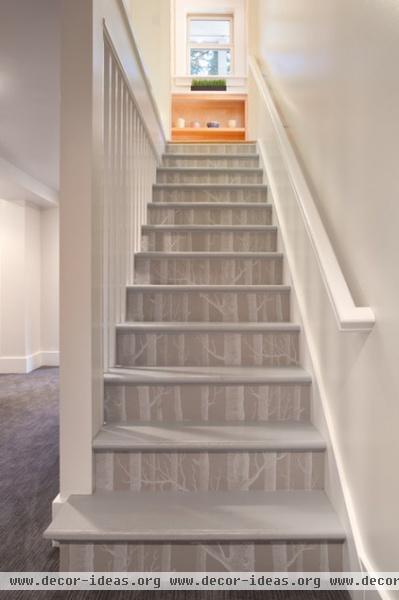
Consider unconventional uses. You can truly incorporate wallpaper into every space — with a little creativity, of course. Yaker suggests alternative applications, like staircase risers, which are often bland and boring. You can even frame the paper as artwork or add it to furniture or closet doors.
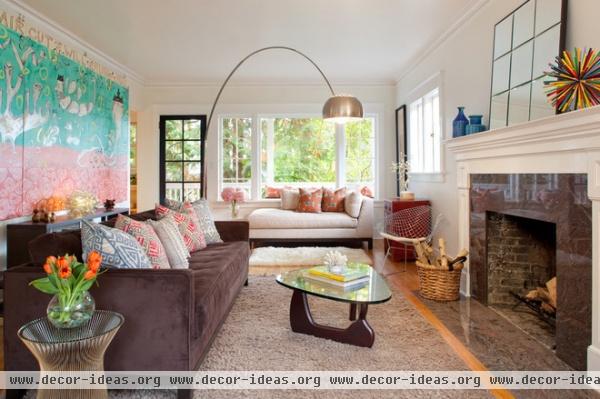
Leave some white space. Leave at least one room paper free, especially one with a great view, where visual interest isn't needed, Yaker says. This living room might not have pattern, but the bright custom art panels add plenty of color.
Know when to leave it to the pros. As you incorporate so much wallpaper, ordering the right number of rolls, taking accurate measurements and completing a seamless wall can be tricky. Professionals can ensure you get the look you want (and have paid for). "Wallpaper isn't difficult to apply," Yaker says, "but if it's not your area of expertise, and you want it done right, you should make the investment, especially when matching patterns."












